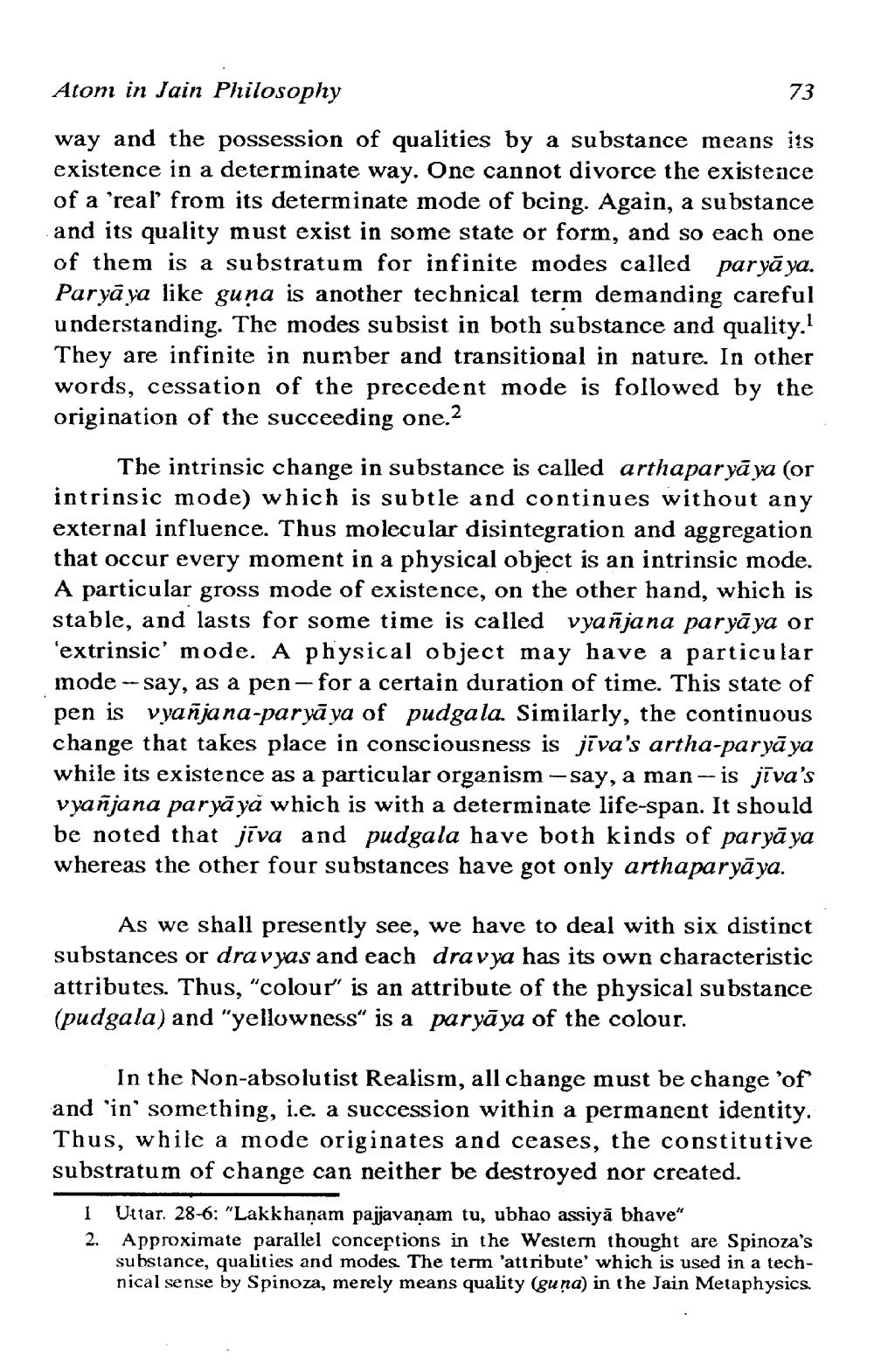________________
Atom in Jain Philosophy
73
way and the possession of qualities by a substance means its existence in a determinate way. One cannot divorce the existence of a 'real' from its determinate mode of being. Again, a substance and its quality must exist in some state or form, and so each one of them is a substratum for infinite modes called paryaya. Paryaya like guna is another technical term demanding careful understanding. The modes subsist in both substance and quality.1 They are infinite in number and transitional in nature. In other words, cessation of the precedent mode is followed by the origination of the succeeding one.2
The intrinsic change in substance is called arthaparyaya (or intrinsic mode) which is subtle and continues without any external influence. Thus molecular disintegration and aggregation that occur every moment in a physical object is an intrinsic mode. A particular gross mode of existence, on the other hand, which is stable, and lasts for some time is called vyañjana paryaya or 'extrinsic' mode. A physical object may have a particular mode -- say, as a pen-for a certain duration of time. This state of pen is vyanjana-paryāya of pudgala. Similarly, the continuous change that takes place in consciousness is jīva's artha-paryaya while its existence as a particular organism-say, a man-is jīva's vyanjana paryaya which is with a determinate life-span. It should be noted that jiva and pudgala have both kinds of paryaya whereas the other four substances have got only arthaparyāya.
As we shall presently see, we have to deal with six distinct substances or dravyas and each dravya has its own characteristic attributes. Thus, "colour" is an attribute of the physical substance (pudgala) and "yellowness" is a paryaya of the colour.
In the Non-absolutist Realism, all change must be change 'of and 'in' something, i.e. a succession within a permanent identity. Thus, while a mode originates and ceases, the constitutive substratum of change can neither be destroyed nor created.
1 Uttar. 28-6: "Lakkhaṇam pajjavaṇam tu, ubhao assiya bhave"
2. Approximate parallel conceptions in the Western thought are Spinoza's substance, qualities and modes. The term 'attribute' which is used in a technical sense by Spinoza, merely means quality (guna) in the Jain Metaphysics.




